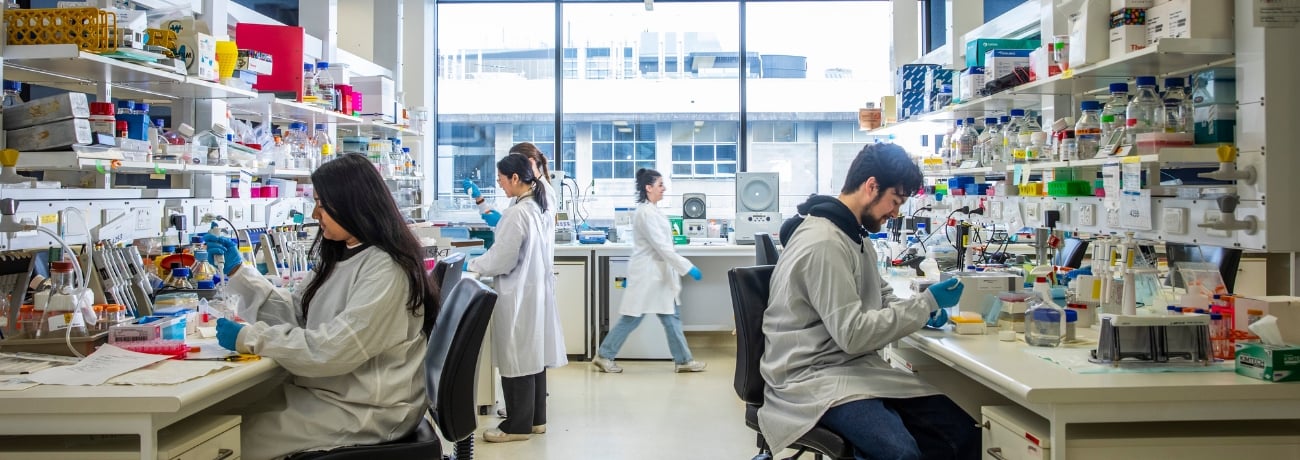Molecular Gerontology Group
Ageing is universal in multicellular organisms. How ageing and lifespan can be modulated is of significant scientific interest to our group. We explore the mystery of human ageing, with particular focus on the brain changes over lifetime.
Research interests
|
Techniques
|
About our research
Studying the mechanisms of ageing in C. Elegans
By reducing complexity and time scale, studying simple organisms provides a wealth of information about the biochemical systems that contribute to the ageing process. The nematode, Caenorhabditis elegans has numerous advantages for the study of the biology of ageing.
These nematodes are microscopic (~1 mm), self-fertilising, free living, and easily cultured in the laboratory. Benefits of this model system include: a short 3-day life cycle, 14-day natural lifespan, highly developed genetic tools, fully characterised cell lineage, and an open research community. Despite its simplicity, conservation of genetic and disease pathways between C. elegans and higher eukaryotes make it an effective in vivo model for study ageing and disease pathogenesis, and the pre-eminent model system for genetic manipulation of ageing.
Work using this model first demonstrated that single genes and compounds could dramatically modulate life span and the rate of ageing.
The interaction between iron and dopamine in Parkinson’s disease
Disrupted dopamine signalling is a feature of multiple psychiatric and age-related neurodegenerative disorders, including Parkinson’s disease. Iron is essential for both the normal function of neurons and, in particular, the regulation of dopamine. Brain iron significantly increases during ageing and may disturb dopamine signalling. In young, healthy individuals, iron in excess of metabolic needs is safely stored in the protein ferritin. However, the function of ferritin appears to fail during normal ageing.
There is limited understanding of the molecular basis for how iron, ferritin and dopamine homeostasis interact in vivo and why dopaminergic neurons die in Parkinson’s. In response, we are developing Caenorhabditis elegans nematode models of ageing, disturbed iron and dopamine homeostasis to look at neuronal function and neurodegeneration in vivo.
Research team
Research team head
Selected publications
- Mubarak SSM, Malcolm TR, Brown HG, Hanssen E, Maher MJ, McColl G and Jameson GNL (2023), ‘Biochemical characterization of caenorhabditis elegans ferritins, Biochemistry, 62(9):1484-1496, doi:10.1021/acs.biochem.3c00005
- Hare DJ, Jones MWM, Wimmer VC, Jenkins NL, de Jonge MD, Bush AI and McColl G (2016), ‘High-resolution complementary chemical imaging of bio-elements in Caenorhabditis elegans’, Metallomics: integrated biometal science, 8(2):156–160, doi:10.1039/c5mt00288e
- James SA, Roberts BR, Hare DJ, de Jonge MD, Birchall IE, Jenkins NL, Cherny RA, Bush AI and McColl G (2015), ‘Direct in vivo imaging of ferrous iron dyshomeostasis in ageing Caenorhabditis elegans’, Chemical Science, 6(5):2952–2962, doi:10.1039/c5sc00233h
Contact us
For more information about our group’s research you can contact us by submitting this form.
